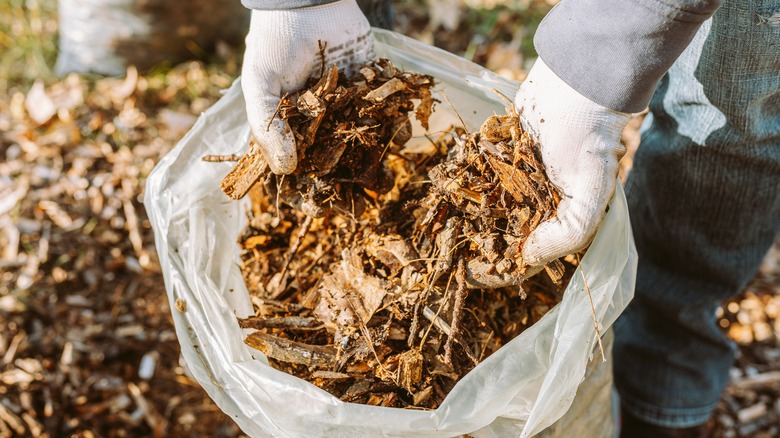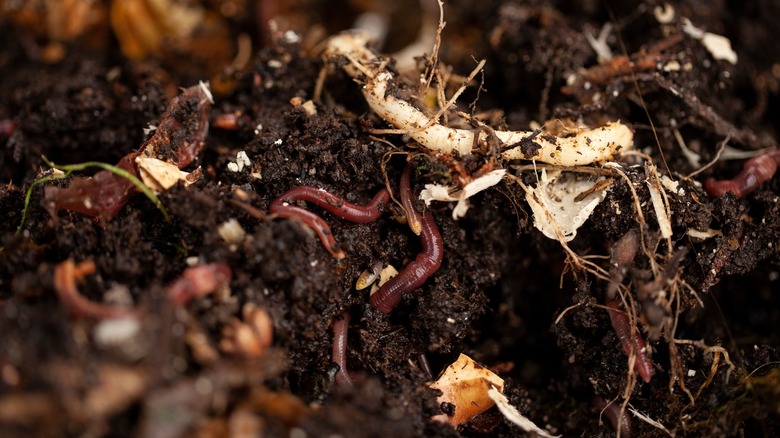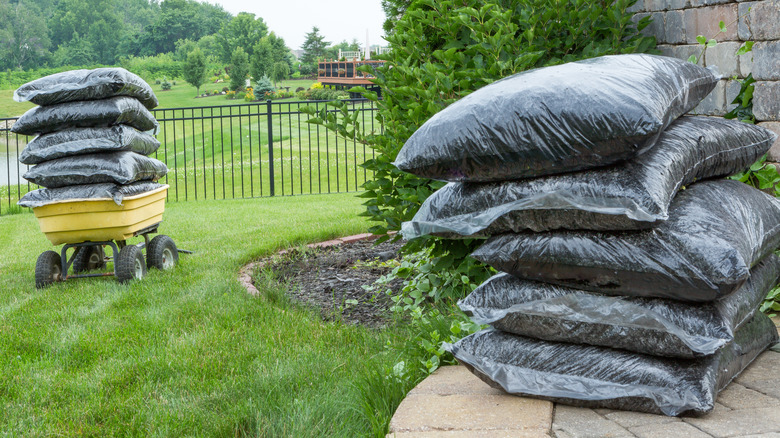Why Putting Mulch In Your Garden Could Invite Jumping Worms
Jumping worms (Amynthas spp.) are a type of earthworm named for their erratic, bouncing, snake-like movements when disturbed. They are typically found at the surface of the soil, mixed in with leaf litter and other organic matter. Jumping worms are characterized by their smooth and sleek bodies and a light-colored ring that's flush and wraps around their body, differentiating them from common earthworms (Lumbricus terrestris). Those are the worms you want to attract to your garden, and they burrow into the soil and have a reddish ring that's raised, not flush. The problem with jumping worms is that they're not native to the United States and can disrupt the nutrient composition necessary for soil and plant life. Originating from Asia, these invasive earthworms have spread throughout North America through soil, plants, and bait for fishing.
Although a common practice, mulching your garden can look like an open invitation to jumping worms, as mulch creates an ideal habitat and offers a prime food source for them. If you use an organic matter-type mulch, like woodchips or leaf litter, this mimics their natural habitat and their typical food source, cellulose. While you can still use mulch in your garden, there are several strategies you can use to protect your yard from these invasive worms.
Are jumping worms harmful?
Jumping worms are particularly harmful due to their feeding habits. They feed on leaf litter that lies on the forest floor, which contains essential nutrients needed for the soil. While the decomposition of leaf litter is critical for maintaining soil structure, jumping worms exhaust these nutrients and disrupt the normal balance and flow of the ecosystem.
For homeowners, jumping worms are problematic and bad for gardens. Using sod, mulch, soil, or compost that hasn't been sterilized properly can spread these worms and their cocoons. Because their cocoons are hard to see, they can easily and quickly become introduced and established your garden before you know what hit you. Their natural behaviors also alter the soil composition, which can create a cascade of issues, like reduced plant vigor, weakened root systems, and the death of plants. However, there are some things you can do to prevent and get rid of these worms in your garden.
What gets rid of jumping worms?
You can use several methods to help mitigate jumping worms in your garden. One effective strategy includes heat treating your mulch or compost. Leave your bags of mulch or compost in the sun for a few days to increase their internal temperature, as you want to get the temperature above 105 degrees Fahrenheit. This temperature is high enough to eradicate jumping worms and their cocoons and prevent them from spreading in your garden.
Creating a mustard drench solution is another environmentally friendly technique to combat jumping worms, as it uses the mustard's naturally irritating (or spicy) properties to force them to the soil's surface and help keep these pests out of your garden. Mix 1⁄3 a cup of dry mustard and add it to a gallon of water, then liberally apply it to the affected soil areas. Using this method makes them easy to spot and remove without resorting to chemical sprays and minimally disrupts your flora. So, the next time you consider adding mulch to your plantings, try these methods to eliminate a potential jumping worm infestation.


